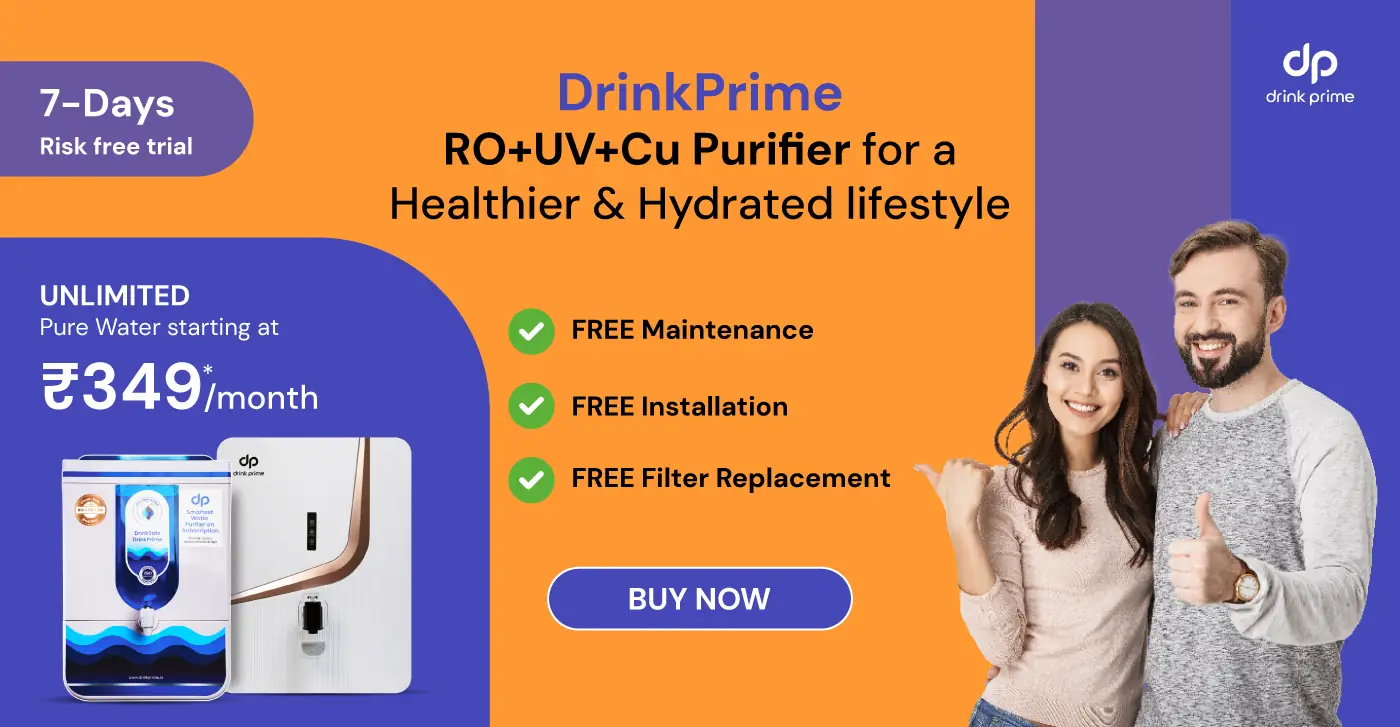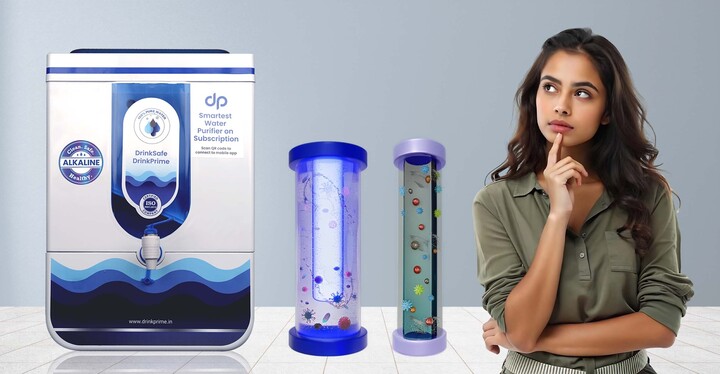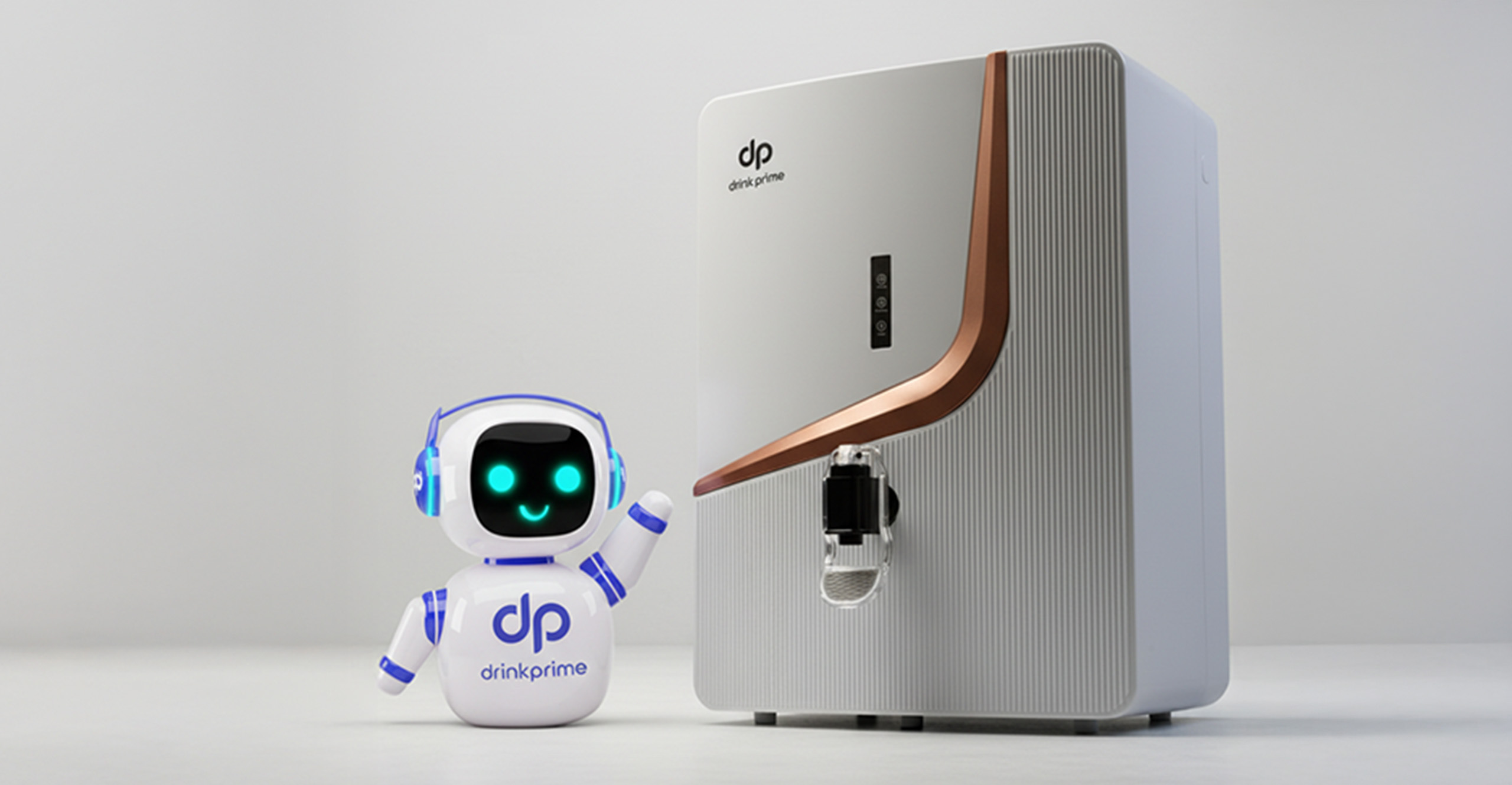Nowadays, when it comes to making sure that you get access to safe and healthy drinking water at home, there are two terms that you will often encounter: HR membrane, which is a high membrane, and RO membrane, which is known as Reverse Osmosis. At first glance, they both might look the same, but in reality, they are completely different. In this blog, we will understand what HR membranes are different from RO membranes, compare their effectiveness, and determine which suits best for Indian urban households.

Understanding What is an RO Membrane
An RO membrane is a semi-permeable membrane that is used in reverse-osmosis water purification systems. In this process, water is pushed under certain pressure through the membrane that allows only water molecules through, and rejects all the dissolved salts, heavy metals, bacteria, viruses, and other contaminants.
RO membrane is typically made of thin-film composite polyamide layers, and it is used in most of the RO water purifier systems.
Key features of RO Membrane
RO membranes require a certain set of pressure to drive the water through from higher dissolved salts, which means that higher pressure is needed. Moreover, they achieve high levels of ion, salt, and contaminant rejection as well. Also, they produce a permeate or clean water that is widely used for both domestic water purification and industrial desalination or pretreatment.
What is HR Membrane?
HR membrane or High rejection membrane is a specialised RO membrane variant that is built for very high salt rejection, and also extreme conditions where TDS level is high due to the seawater or industrial effluent or when the highest purity is required.
Characteristics of HR membranes
HR membranes, or High rejection membranes, are designed to achieve an extremely high salt rejection rate, and they are built to certain challenging feed water conditions, which often include high levels of TDS, an increased number of fouling, and harsher chemicals that require cleaning requirements as well. But due to these capabilities, HR membranes are commonly used in industrial, municipal, or specialised drinking water plants rather than typical household units.
HR Membrane vs RO Membrane: How do they compare?
1. Rejection Rate
So, when comparing HR membranes and standard Reverse Osmosis membranes, one of the major differences is the rejection rate. Standard RO membranes typically achieve certain high rejection rates, depending on the kind of water quality, but when it comes to HR or high rejection membranes, they are designed to achieve even higher rejection rates, which can range between 99.3% and 99.9%. This completely makes the HR membrane much more suitable for situations where you require pure water.
2. Feed water conditions
Another key difference is the feed water condition of the HR and RO membranes. Generally, RO membranes work really well with typical municipal or borewell water that has moderate TDS levels, but in contrast with HR membranes, they are built to tolerate very high TDS levels, and much feed water, hence making them suitable for industrial or specialised applications.
3. Cost of HR Membrane and RO Membrane
Cost is another parameter; the RO membrane, on the one hand, generally operates at lower overall costs, whereas the HR membrane requires higher operating pressure because they are made up of more robust materials and might involve much more complex maintenance routines, which can increase the overall costs as well.
4. Rejection of Waste Water
The wastewater or reject water ratio is another factor that often has a higher reject water ratio, while HR membranes may achieve better efficiency with very high TDS water, even though for typical domestic use.
5. Suitability for domestic use
The last key difference is that the suitability for domestic use is an important consideration. Standard RO membranes are usually sufficient for most households, especially when paired with proper pre- and post-filtration. High rejection membranes are completely superior, and are often overkill for domestic use unless the feed water is extremely challenging or there is a need for premium purity.
Which one is Better?
If your water source comprises high TDS levels, hardness, and heavy metals, then a good RO membrane will be an ideal choice for purifying water to a safer level. RO is one of the few technologies that reliably removes dissolved salts.
On the other hand, if your water source has low to moderate TDS levels, and you mainly face microbial contamination, then you might not need the RO membrane; then UV water is sufficient. But if your water conservation or less wastage is a priority, then HR or a high rejection membrane is an ideal choice.
Why Choose DrinkPrime?
DrinkPrime is an ideal option that is tailored to each Indian urban household based on the water quality. DrinkPrime typically uses an RO membrane that is equipped with an advanced membrane, potentially HR variants, to ensure maximum purification while minimising water wastage.
Besides, in contrast to areas where there are TDS levels that are moderate and the main concern is microbial contamination, it is always recommended to go for UV-based water purifiers, which preserve essential minerals and reduce the electricity consumption as well.
Additionally, what makes DrinkPrime stand out is that it offers a subscription-based model, where a user gets free installation, maintenance, and regular filter replacements, which means that you get to enjoy safe and healthy drinking water without any worries.
Summary
In summary, when it comes to selecting between an HR membrane and an RO membrane, the decision completely depends on the specific water quality that is required. While both of the technologies are completely designed to purify water and remove all the harmful contaminants, their application and specifications differ from one another. RO membranes are highly effective and ideal for most Indian households, especially those who are dealing with high TDS levels, hardness, or even heavy metals. HR membranes, on the other hand, offer even higher rejection rates and are built for extreme water conditions, making them more suitable for industrial or specialised applications where superior purity is required.
For Indian urban households, a well-designed RO purifier is usually more than sufficient to deliver safe and great-tasting drinking water. However, for areas facing water scarcity or high TDS levels, opting for purifiers with HR membrane technology can help achieve better water recovery and reduce wastage.
This is where DrinkPrime truly makes a difference. By analysing the source water quality in your area, DrinkPrime ensures that you get the right purification technology for your home, whether that’s an RO purifier with advanced HR membrane variants or a UV-based system for lower TDS water. Additionally, DrinkPrime makes sure that you get free maintenance, free filter replacements, and also makes sure that you get access to safe and healthy drinking water with advanced purification technologies.



